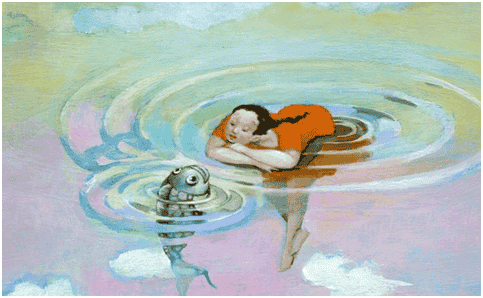The phenomenon of late adolescence is an increasingly frequent reality.

Last update: July 26, 2022
In today's world, the age of people seems to have less and less weight. At some point it turns out that life does not necessarily correspond to the theoretical schemes that are provided to us in the course of our existence. As proof of this, we have the phenomenon of late adolescence, an increasingly frequent reality.
First of all, we must remember that adolescence is that stage in life that bridges the gap between childhood and adulthood. It is a period characterized by great emotional instability and the desperate search for one's own identity. Much of the ups and downs typical of this phase depend on the multiple bodily changes that occur. The period of sexual maturity arrives, and with it a particularly "stormy" hormonal activity.
Adolescence is society's permission to combine physical maturity with psychological irresponsibility.
– Terri Apter
The concept of late adolescence has two connotations. The first indicates the period corresponding to the last years of adolescence; or when all the changes have come to an end and the young person is ready to fully enter adulthood. The other connotation concerns those phases of life in which the typical traits of adolescence seem to resurface.
In the first case it is a technical term, while in the second it is simply a creation of "popular psychology".
Late adolescence as a technical concept
Developmental psychologists divide adolescence into three phases. Early adolescence (or pre-adolescence), which ranges from 11 to 13 years and corresponds to the period of puberty. The intermediate adolescence (or adolescence proper) ranging from 13 to 16/17 years. And late adolescence which includes the period between 15-17 years and 21 years.
Late adolescence is a phase characterized by greater stability than earlier phases. Identity is much more defined, a great idealism prevails and an enormous capacity to create illusions about the future. Sometimes crises arise because of the new responsibilities that young adults are called to take on. The adolescent does not always feel ready to face all this.
Unlike what happens in the earlier stages, during late adolescence, feeling part of a more or less stable group is not really that important. In this phase there is a tendency to give greater importance to individual relationships. The relationship with the family becomes less stormy. Big projects and the desire to change the world from day to night prevail.
The "eternal" teenagers
The term late adolescence is now also used to define children emotional states that present characteristics typical of adolescence, but which occur during adulthood.
The point is that the various stages of growth do not always follow one another perfectly as theoretical schemes would have us believe. There are circumstances capable of prolonging some phases or making some traits typical of adolescence or childhood reappear in adulthood.
Late adolescence can manifest itself in several ways. It can be said that the most frequent is the case in which the adult remains an "eternal rebel", full of dreams, but with no concrete goals to achieve. He opposes, for no specific reason, the adaptation to life as an adult. He does not accept the world for what it is, but at the same time he does not act in a concrete and reasoned way to try to change it.
In these cases it is not uncommon to observe that even the relationship with the parents remains stormy. Parents are accused, blamed, but at the same time it is impossible for these eternal teenagers to separate from them on an emotional level. Sometimes they even end up staying in the same house.
The myths about growth
Often and willingly, it is the parents who do not want their teenage son to grow up. Beyond the emotional bond, to push them to behave in this way may be their fear of getting old or taking charge of their own life. These parents ensure that the economic, emotional and psychological dependence of their children persists over time.
In general, modern society has built a myth according to which youth is the only phase of life worth living. It is no coincidence that the cosmetics industry, in which a large part of the products are aimed at “slowing down aging”, has been so successful. By now the word "adult" is unpleasant to many. It sounds serious and dull. It gives the idea of responsibility, which is the exact opposite of what happens in youth.
This is not bad in itself. What is counterproductive is the renunciation of autonomy and responsibility caused by continuing to live as teenagers. Late teens have no way of understanding what they are really capable of.
Our potential only comes out when we take responsibility and overcome our fears. If we don't try, chances are we'll start to feel uncomfortable. Over time we will feel more and more inadequate and, without realizing it, we deprive ourselves of the most important experiences.


























